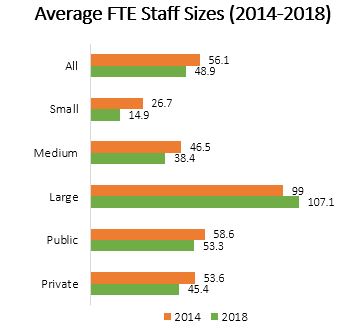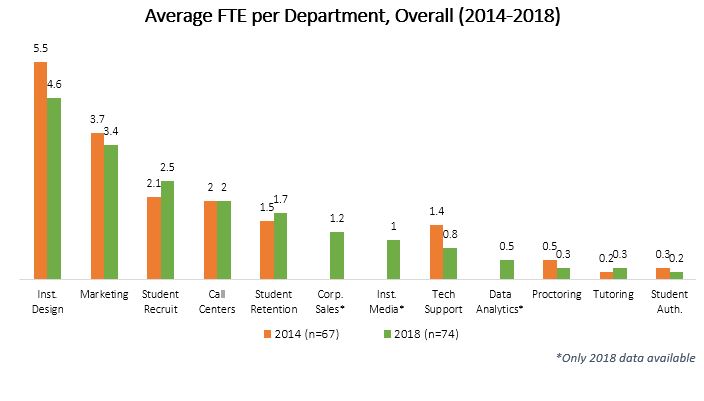Jointly hosted by the Community and Economic Engagement & Marketing, Enrollment, and Student Services Networks
Programming and marketing for the corporate market need to be done differently than for open enrollment programs. This webinar will examine successful examples from the UC Irvine corporate programming and outreach and a survey of best practices derived from MindMax’s experience with many institutions.
Moderator:
Chris Nicholson, Assistant Dean, Enrollment, Marketing and Partnerships, University of Denver
Panelists:
Gary Matkin, Dean, Continuing Education/Vice Provost, Career Pathways, University of California Irvine
Lee Maxey, CEO, MindMax
Over the past four years, the higher education landscape has changed significantly as many institutions either added to their online degree portfolios in the form of professional master’s degrees or joined the movement to bring their traditionally campus-based programs online. Some have extended their already online expertise by developing Massive Open Online Courses (MOOCs) or complete MOOC degrees. Others have further diversified their program portfolios by following anticipated generational needs and preferences by investing in alternative credentials such as badges and certificates. To navigate change, institutions require experienced leadership in many critical positions, including senior administration of the professional, continuing, and online (PCO) education unit; online program management; instructional design; finance and administration; corporate relations; marketing and others.
To validate the importance of leadership and measure financial commitment to staffing, UPCEA recently surveyed its membership. Comparing the 2018 findings to the 2014 results, the average salary of the top administrator remained largely unchanged. In 2014, the average salary for the top PCO leader was $153,188 and in 2018, it was $158,832. Further breakouts did show the title of “Dean,” “Associate or Vice Provost,” or “Vice President” titles increased slightly during the four-year span while director titles remained the same.
The average salary of the top administrator in each department went up overall from 2014, with the exception of the top administrator in the executive/professional education department (which went down slightly). This finding is not surprising as many business schools are struggling to reposition not only their MBA programs, but their noncredit executive education programs. Some have even shifted what was once a noncredit, open-enrollment, intensive executive education model into fully online programs, hybrid/low residency graduate degrees or post-baccalaureate certificate programs.
Over the years, higher education has also seen greater urgency with improving its connections and relationships with the workforce and community. As a result, the average salary for the top corporate training/partnership administrator increased the most (17%), particularly for larger (26%), public (20%) and/or urban institutions (14%).
Given the growth in online, the average salary of the online/distance learning top administrator had the second highest increase (14%), especially among medium-sized (34%) and smaller institutions (23%), and for urban institutions (15%).
When accounting for a change in the average cost of living[1], the average salary for the top corporate training/partnership administrator and the top online/distance learning administrator still saw significant increases, though several top department administrators saw their real wages decrease if compared to cost of living indices. However, as a percentage, wage increases in the college and university education sector lagged behind workers’ categories overall.
Click here to read the full report.
[1] CPI data was gathered from the Bureau of Labor Statistics.
Recently, we conducted a member needs assessment to ask members how we can improve the value we offer to all those in the UPCEA community.
A special thanks to all of you who took the time to share your thoughts with us. We’ve carefully reviewed your feedback, and I’m pleased to share what we’re doing in response to your ideas, needs, and suggestions for improvement.
What You Like About UPCEA
We’re excited by your positive view of membership!
- The majority of you feel that the value of your membership is equal to or greater than what you’re paying.
- Overall, 89% of you are satisfied with your UPCEA membership. (This number is well above average for membership associations, but we are committed to making it even higher.)
- The aspects of UPCEA membership you value most highly are things that have always been core to our mission: networking and community; conferences and the opportunity to present; and updates on current industry trends and news.
Where You Want UPCEA to Grow
The future direction of many of the ideas you shared are so important to us that 2017-18 UPCEA Board of Directors President, Wayne Smutz, established a Value Proposition Task Force to ensure that our priorities align with what you’ve told us you want to get from UPCEA. Although more details from the Task Force will be available later this year, much is already in the works on these issues:
- UPCEA members are so varied—both in terms of level experience and area of professional focus—that we are committed to providing different constituency groups with the information, news, research, and services that are most relevant to each.
- You told us you were interested in more online tools and resources, as well as more online webinars, seminars, and workshops. We are working to have these additional opportunities available for you in the near future.
- We know that time is at a premium for everyone these days, and we’re taking steps to make our resources easier to access – so you can find what you need, on your schedule.
- Many of you indicated that formal, credentialed professional development or continuing education programs are also of interest, with a special emphasis on gaining immediate skills and establishing professional credibility and expertise. We are keeping these priorities top of mind as we work to develop these programs.
We’ll continue to share more information on these initiatives as they develop. As always, I welcome your feedback as we work together to strengthen the field of professional, continuing, and online education.
Online: Trending Now #134
Augmented Reality is emerging as a powerful tool in distance online learning.
It is common that Virtual Reality (VR) is confused with Augmented Reality (AR). They are often conflated because some technologies apply to both. Augmented reality, by definition includes the “real world” around the user. Virtual reality is entirely virtual. To add to the confusion, eXtended Reality (XR) is increasingly commonly used to refer to the range of realities including “virtual, augmented, immersive, and mixed realities.” EDUCAUSE has recently published a guide to using XR in higher ed that cautions these require careful planning and substantial resources.
While the development and resources required are substantial, the impact is powerful, indeed. In fact, “A Review of Using Augmented Reality in Education from 2011 to 2016” in the proceedings of the Innovations in Smart Learning 2017 conference turned up some 55 studies, “most of the studies reported that AR in educational settings lead to better learning performance and promoting learning motivation, which was because AR supplies the authenticity graphical content and interaction. Also, deeper student engagement improved perceived enjoyment and positive attitudes of AR are reported as the effectiveness of using AR.”
One of the biggest challenges in online learning is to give students experiences that replicate those that they may find in laboratories or site visits. It is the in-person experience with artifacts and environments that is so difficult to deliver at a distance. Certainly, images and videos go a long way toward addressing the need, but they lack the rich, immersive context of a 3-dimensional opportunity to observe and interact with all sides of an object such as an organism or historical artifact that one might have in a laboratory or museum. Augmented reality offers that ability to “walk around” an object and observe it on all sides.
High risk scenarios are safely enabled by augmented reality. For example, a chemistry experiment using dangerous chemicals or one that carries a risk of conflagration or poisonous fumes can be done via augmented reality without danger to the student. Medical schools have been at the forefront of using augmented reality to teach surgical techniques as well as anatomy and physiology such as seen in this Case Western Reserve University video.
Providing these experiences to students at a distance is even more impactful. Augmented reality is not bound by time or location. Simulations and interactions are possible. Christopher Pappas, founder of the eLearning Industry’s Network, suggests “eLearning augmented reality isn’t just for asynchronous applications. In fact, it allows online learners from the world to interact with their peers in virtual settings.… Geography is no longer a barrier, as online learners have the power to share ideas and feedback in a virtual meeting space. They’re able to use mobile devices and smart glasses to make the experience even more interactive.”
The progress in this field is rapid with many industry partners refining and reducing the cost of goggles and monitors. And, of course, there are MOOCs available to help get you prepared to use augmented reality such as this Coursera one by Institut Mines-Télécom on developing augmented reality on the Android platform.
The time is now to prepare to integrate augmented reality in online learning programs. The technologies are ready, production software is available, and learning benefits are obvious.
Of course, I will continue to track the developments in MOOCs, emerging trends, technologies, pedagogies and practices in continuing and professional higher education and share them with you through Professional, Continuing and Online Education Update blog by UPCEA. You can have the updates sent directly to your email each morning – no advertising, no spam!
Best,
Ray Schroeder
Director
National Council for Online Education
Recently, we identified gross revenue per employee increasing from $278K in 2014 to $311K in 2018. While the revenue side of equation decreased by almost 10%, the staffing part of the equation also decreased. A number of factors could be at play regarding staffing decreases during this time, such as: 
- A shifting in some cases to a decentralized professional, continuing and online (PCO) education model where resources are placed in an academic college, as opposed to a centralized unit.
- A shifting of some positions to the institution’s centralized services, such as marketing and IT.
- A shifting of some positions away from the established PCO unit to other areas of the institution, such as instructional design. Instructional designers appear to be in high demand in the higher education community, yet the study shows that they have decreased within the PCO structure. We have concluded that their reporting lines may not necessarily reside in PCO, but elsewhere at the institution.
- Outsourcing of some functions, such as the use of OPMs, intake or inquiry management, or contract marketing services may also mask increased activities, but not within the PCO organization.
- The other factor could be a true reduction in PCO operations, although given market conditions, we would hope that these revenues or portfolio diversification opportunities would have shifted elsewhere at the institution.

The last four years have shown a great deal of change for PCO education and while there are resources within the unit and in other places at or outside of the institution; continued competition, technology and industry advances and shifting demographics are likely to further challenge and provide new opportunities for colleges and universities. Strategic staffing and resource management are critical parts of the equation. Click here to read the full report.
In my recent paper, A Third Wave of International Student Mobility, published by Center for Studies in Higher Education, UC Berkeley, I analyzed the landscape of international enrollment from the lens of three Waves defined by key events shaping student choices and provided an overview of data-driven enrollment trends by institutional types.
First and second Waves were characterized by the terrorist attack and global financial recession respectively. The terrorist attacks of 9/11 during Wave I resulted in stricter visa barriers for international students and many competing destinations expanded enrollment at the expense of the US. The global financial crisis during Wave II resulted in severe budget cuts for the higher education sector and compelled many institutions to expand international enrollment to generate additional sources of revenue. Thus, American universities experienced international enrollment boom during Wave II with full-fee paying Chinese students as the key contributors of enrollment growth.
Wave III is shaped by the uncertainties triggered by the new political order with anti-immigrant rhetoric and policies which in turn is intensifying global competition for international students. Also, an intersection of sociopolitical, demographic, and technological megatrends coupled with the global ambitions of Asian and European universities with English-taught programs is making it increasingly challenging for American universities in gaining the attention of prospective students in a politically unfavorable environment.
In 2016, 312 Doctoral Universities enrolled over 276,000 international graduate students and comprised of 28% of all graduate enrollment at these Doctoral Universities. However, just 37% of all Doctoral Universities with Highest Research Activity as defined by Carnegie Classification, enrolled 76% of international graduate students at 312 universities. While here graduate enrollment data is not broken up by doctoral and master’s degrees, significant opportunity exists for growing international enrollment at master’s level. According to National Science Foundation, 15% of all master’s degrees awarded in 2015 went to international students as compared to 26% of doctoral degrees.
The strong growth trend experienced by many graduate schools in Wave II is quickly reversing to deceleration or even decline in Wave III. An analysis of the data suggests that the U.S. universities enrolled 21,390 fewer international graduate students in Fall 2017 as compared to Fall 2016. At average tuition and fees of US$ 25,000, higher education institutions are likely to lose potential revenue of US$ 535 million for the first year of studies alone (without factoring any tuition discounts/waivers).
In sum, Wave III of international student mobility is characterized by a higher reliance on international students for sustaining graduate enrollment goals in times when it is increasingly challenging to recruit them due to competition and political climate. This calls for innovation and adoption of recruitment strategies that are not only cost-effective but allow for targeted outreach in line with shifting student behavior around the world. The success of many institutions will depend on how quickly and effectively they innovate and adapt to the new environment of the Third Wave.

Dr. Rahul Choudaha is a recognized scholar-practitioner with expertise in international student mobility trends and its implications for global engagement and enrollment strategies. He is Executive Vice President of Global Engagement and Research at Studyportals. He blogs and tweets as DrEducation.
Online: Trending Now #133
The potential digital student assistant is on the near horizon, and it promises alter practices and pedagogies in a big way. All the parts are there; almost certainly some developers are in product testing for a digital student assistant. By assistant, I don’t mean the “Jill Watson” AI graduate assistant that Professor Ashok Goel of Georgia Tech has so successfully and famously developed. Now in his ninth semester of utilizing an AI teaching assistant, Goel continues to refine the product.
Instead, I mean the kind of personal assistant that will soon be available to students to aid in their completion of homework and, perhaps, tests. Already on the market are chatbot apps that meet many of the needs of college students. For example:
For instance, Leeds Beckett University in the UK is using chatbots to help students find unfilled seats in courses. BI Norwegian Business school is implementing chatbots that respond to questions from students on assignments. And Georgia State University uses chatbots to help fight summer melt. Though conceived as a tool of convenience, chatbots will track, analyze, and adapt realtime to massive amounts of student data. Leveraging chatbot and voice-assistant technology could revolutionize the student experience.
Students already use Alexa and Google Home to help with their homework.
For example, nearly a third of respondents ages 14 to 17 said they use them regularly. Respondents ages 18 to 34 are more interested in AI than older respondents, but just 23% of these older millennials use the technology regularly.
By comparison, just 14% of 35- to 55-year-olds use these digital assistants frequently, and even fewer respondents ages 55 and older do so. Even among people who just started using them, adoption is highest among teens and millennials.
In many of these cases, students simply voice their homework questions such as math problems, history questions, and literature critiques. Beyond these rather simple applications will come the assistant serving the academic side, with refined capabilities such as ability to research unique topics and report in high quality prose; compose documents in APA or MLA style; and connectivity to printers. Siri or Google replies with the answer. But, taking this just one more step, imagine the student request is for a 10-page paper with a dozen annotated sources in APA style on the colonial impact of the French Revolution. “Oh, and print out two copies for me within the next ten minutes!”
How will this impact the way in which we assign final papers in our classes? And, consider the advent of AlterEgo at MIT. It is described as a “personalized, wearable silent speech interface.” Simply by silently reading text, the thought process is captured by as few as four sensors that input data (such as a test question) into a computer which is then programed to voice the reply into a bone-conduction headset.
Imagine how this will impact assessment at your institution and among standardized tests. The pressure will be on to create more authentic assessments – computer aided or not – that will better reflect real-work-based activities.
Of course, I will continue to track the developments in MOOCs, emerging trends, technologies, pedagogies and practices in continuing and professional higher education and share them with you through Professional, Continuing and Online Education Update blog by UPCEA. You can have the updates sent directly to your email each morning – no advertising, no spam!
Best,
Ray Schroeder
Director
National Council for Online Education
